Pain Read online
PAIN
a novella by
Harry Shannon
Kindle Edition
Dark Regions Press
2010
KINDLE EDITION
Text © 2010 by Harry Shannon
Cover Art © 2010 by Alex McVey
Introduction © 2010 by Jonathan Mayberry
“The Name of the Wicked” © 2010 Harry Shannon
This digital edition October 2010 © Dark Regions Press
Joe Morey, Publisher
Norman L. Rubenstein, Editor
Cover and interior design by
David G. Barnett/Fat Cat Graphic Design
www.fatcatgraphicdesign.com
Dark Regions Press
PO Box 1264
Colusa, CA 95932
www.darkregions.com
PAIN is for my wife and daughter, as always. Yossi Sasson, we’re going to make this damned movie one of these days! Many thanks to Norm and Joe at Dark Regions for the encouragement and support, and to Alex McVey for the terrific cover art.
Table of Contents
Introduction by Jonathan Mayberry
Pain
About the Author
In the Name of the Wicked
(a sample story from the short story collection A Host of Shadows by Harry Shannon)
Dark Regions Press Ad
Introduction
There are zombies and then there are zombies.
And, God help me, I love my life-impaired fellow citizens. I love ’em slow, and I love ’em fast. I love zombie movies, zombie comics, zombie short stories, zombies novels and zombie TV shows. I’ve decorated one whole wall of my office with zombie toys and action figures, including a remote-controlled walking zombie and a Jell-O mold in the shape of a brain.
Non-zombie fans (a dwindling crowd) usually make a face when the word ‘zombie’ is used. They have an image in their minds that all zombie films are:
• Low Budget
• Badly Acted
• Intensely Gory
• Just about zombies
• All of the above applies to books, TV shows, comics, etc.
To be fair, there are a whole of low budget, badly acted, intensely gory zombie books/movies/whatever that are just about zombies. They are not intended for non-zombie fans and they won’t convert anyone to the Z religion.
On the other hand there are a lot of superb zombie stories.
Like the one you’re holding.
What makes a zombie story superb? What makes one good?
Funny thing is, the best way to tell a zombie story is to not tell a story about zombies.
Let’s break that down.
First off, we’re not actually talking about ‘zombies’, so let’s get that out of the way. Zombies are a cultural phenomenon of the Haitian religion of vodou (or voodoo if you prefer Hollywood’s misspelling). In that culture and belief system, bokors (priests of the vodou faith) use a combination of magic, ritual and alchemy to either bring a corpse back to a semblance of life or, more often, put a living person into such a deep hypnotic trance that his metabolism is reduced to a nearly deathlike state. In such a condition a person is highly susceptible to suggestion and can be used as slave labor, as personal servants, and even in some cases as assassins. A couple of decades ago ethnobotanist Dr. Wade Davis discovered that bokors used a chemical compound called coupe poudre –or ‘zombie powder’—to create and control the zombies. Dr. Davis cracked the chemistry to reveal that coupe poudre contained, among other things, the neurotoxin tetrodotoxin and other toxins including those produced by cane toad (Bufo marinus) and the hyla tree frog (Osteopilus dominicensis). Yada yada interesting but not relevant. These aren’t the zombies we’re talking about.
Our zombies were born in a graveyard in Western Pennsylvania on Oct 2, 1968. That’s when George A. Romero’s classic flick NIGHT OF THE LIVING DEAD shambled into the cultural consciousness. In that flick the recently dead rose up –for reasons only sketchily discussed and never clarified—and attacked the living to feast upon human flesh.
Romero never hung the word ‘zombie’ on these ghouls. That was the brainstorm of Italian filmmaker Lucio Fulci for a film he released at the same time as the European release of Romero’s second film, DAWN OF THE DEAD. In fact DAWN was called ZOMBI in Europe, and Fulci’s film, though not in any way connected, was titled ZOMBI II. The word sank its teeth into the genre and nothing can shake it loose.
A lot of folks –fans as well as creators of zombie books and movies—talk a lot about what is and what isn’t proper zombie lore. If I had a dime for every time I’ve heard someone say: “Zombies can’t do that!” or “That’s not how a Romero zombie works!” I could bankroll a big budget Hollywood blockbuster.
Romero’s films have had such an impact that many regard them and their content as canon. Thou shalt not deviate from Romero.
Except that everyone, including Romero, deviates from Romero.
Think you know your immutable Zombie Rules According to Saint George? Consider this…
• Zombies only eat human flesh. Sure…except that we see them eat insects in NIGHT and a horse in Romero’s latest, SURVIVAL OF THE DEAD.
• Zombies are totally mindless. Ah, but in NIGHT they pick up rocks and sticks; and one tries to open a car door by jiggling the handle; in DAY OF THE DEAD, a zombie is taught to speak and use a phone; in LAND OF THE DEAD, the zombie Big Daddy plans and executes a siege of a city, figures out how to use an automatic rifle, and cleverly uses a gas pump to fill a car with gasoline in order to kill an enemy.
• Zombies don’t have emotions. In DAY, the zombie, Bub, clearly demonstrates grief when his scientist ‘keeper’ is killed; and he exacts revenge. In LAND, Big Daddy cries out in grief when a zom is killed, and he also seeks revenge for what he clearly deems are hate crimes against his ‘species’.
• Zombies are slow! There is a great hatred in some quarters about fast zombies. However in DAWN the character, Peter, is attacked by a pair of zombie kids at an airport, and those kids move mighty damn fast. Ergo…Romero had fast zombies first!
• Zombies are dead, not infected humans. This is another of the Big Debates in the realm of the living dead. Since the flick 28 DAYS LATER was labeled by the media as a ‘zombie flick’ die-hard Romero (and even Fulci) fans have taken a stand against it, saying that infected humans are alive, and are therefore NOT living dead. I disagree, and so does Saint George. He pioneered the infected humans storyline waaaaay back in 1973 with his film, THE CRAZIES. No, they weren’t reanimated corpses, and no they didn’t exactly eat people, but the overall format was the same: a plague that spreads quickly and causes people to go on murder rampages. That’s a storytelling model a LOT of people have used since. George Romero did it first. So, 28 DAYS is a riff off of another of Romero’s spins on the zombie outbreak model. So there.
So…those are the zombie basics. Now, the reason zombie stories work so well when the monsters aren’t the focus is simple: it’s a known psychological phenomenon that the more you look at something frightening the less frightening it becomes. Most good horror flicks are scarier before we see the monster, and often much less so afterward (they tend to shift from dreadful suspense to action once the monster shows up. Not sure how that works? Watch JAWS.)
Since Romero kicked the genre into gear in 1968, zombies have been walking metaphors. They’re stand-ins for whatever scares us. For Romero that’s been racism (NIGHT), mindless consumerism (DAWN), the runaway build-up of the American military (DAY), the Bush presidency (LAND), the dehumanizing effect of our increased reliance on technology (DIARY), and so on. Other writers have used zombies as metaphors for the slacker culture of Generation X, the threat of global pandemics such as ARS and AIDS, the rape of the ecology by big business, xenophobia, a
nd terrorism. And the model allows for that. Like the best of drama, zombie stories allow the writer to introduce and maintain a massive, constant threat which affects every character in the story. Once done, the real meat of the story is about how the characters react and respond to the threat, how they interact under stress, and how the stress warps or reveals hitherto repressed or suppressed aspects of their personalities. Zombie stories are not about zombies, they’re about people.
Which brings me back to the book you’re holding.
PAIN is a zombie novel. Kind of. Not exactly resurrected corpses. Not exactly infected humans. Not exactly anything you’ve seen before.
It’s a story about people dealing with a terrible crisis. People under pressure. People who (at the outset) don’t know each other and really don’t know themselves. Until the pressure builds as the hordes of shambling zombies attack.
It’s fair to say that Harry Shannon gets the whole zombie thing. He blends a storyteller’s natural gift for creating believable and relatable characters with a trickster’s dark playfulness. We get combat troops, sinister organizations, religious nuts, rebellious teens, heroism, villainy, steamy sex, and a clown with hemorrhoids. And zombies. Lots and lots of zombies.
PAIN is a wonderful new addition to the growing library of superb zombie tales. Mark Twain once said that he likes “a good story well-told.”
That’s what we have here.
A damn good story, very well told.
With zombies.
Turn the page.
Take a bite.
Have fun. The author clearly did.
—Jonathan Maberry, NY Times bestseller and multiple Bram Stoker Award-winning author of ROT & RUIN,
ZOMBIE CSU and PATIENT ZERO
Pain
8:27 PM
“Freeze…”
Low, hoarse whisper on a frosty night. Five soldiers smoothly drop to their knees, weapons raised and facing the woods in a lethal arc. Cap Rogers has commanded them since the beginning, all the way from Afghanistan into mercenary work for Blackwatch. His word is law. Sweat rapidly cools in a light breeze. Their NV goggles, silenced weapons and black clothing, all carefully cleared of battle rattle, make them look like a horde of giant insects. A full moon inches across the heavens, quietly slips behind a thick, brooding cloud. To these anxious men the entire world is flowing ink and bustling shadow. Down below, in the trees, something screams high and shrill. A grunting figure crashes through the brush, headed their way, but then veers south instead. Other things pursue it, shrieking with rage. A dozen or more pairs of feet crunch through leaves, twigs and half-frozen dirt.
“Hold your positions,” Cap whispers.
His tense men hear him grainy in their headsets, that deep voice thick with tension. They are on edge and itching to get home, but trust this man implicitly. Cap looks like a recruiting poster for Special Ops; big boned, buff and steely-eyed.
“Hang tough,” Cap says then. “When this bunch is past, we’ll make a break for the highway.”
The roaring mob arcs through the night, achingly slow, almost as if taunting the team. The piteous wailing intensifies. Whatever is being pursued has apparently been cornered. Animal noises echo through the woods; a grunting, ripping and after that the wet sound of flesh being torn asunder. One horrified voice, pitch driven higher and higher and higher by pain. On and on. The men wait with widened eyes. Finally, the agonized screaming stops. Silence drops like a thick, black curtain.
Cap whispers again, “Go.”
The squad turns, jogs downhill. Cap remains behind for a long count, his cool eyes sweeping the woods, then follows his men towards the distant highway. A full moon returns to stage-light the empty clearing. After a time one timid owl resumes hooting. A few nocturnal animals stir. The breeze dies, swirls leaves, bides its time.
To the men, their rapid passage through the forest seems loud and clumsy, although only an animal or a trained hunter would be able hear them pass. The team carefully but quickly avoids thickets and hops over twigs and fallen branches. They breathe slowly and deeply. These are men already used to long jogs through the night into morning. Their training never stops. But this time a creeping sense of dread fuels their bodies. To pause is to die, and die horribly. And so they trot on and on under an indifferent, star-speckled sky.
Cap Rogers can see the thick ribbon of empty mountain highway down below, knows the emergency roadblocks will re-route most traffic via a long detour to Interstate Five, but his hopes rest on a tourist or two having left prior to the Red Alert, someone with a vehicle large enough to carry his men. People still drive vans, SUVs. Trailers pulling horses are also common in this part of Nevada. If there are no vehicles, then a place to make a stand. Anywhere but here. A good officer has to cling to hope, think on the fly, improvise. The men depend on Cap’s instincts, his ability to make a quick decision. Tonight more than ever before.
“Stop and drop.”
The men kneel, then ease themselves down, still in a half-circle facing up the hill. They do not have to be told to keep their rifles in a wide field of fire. Cap stays on one knee. He glasses the woods, sees nothing, swallows dryly. Orders the men to take two sips of water. Then they will be back up and on the run in two minutes. They are not that tired, Cap knows, he just wants to listen. The things pursuing his short team seem to travel loudly, clumsily, and it bothers him that he’s not hearing a thing right now, nothing at all. The mountain creatures around them have gone to ground. If the group stops moving long enough, something should stir out there. Unless…
Walt Bowden touches Cap on the leg. Cap looks down, flips his microphone to one side. Walt does the same. “Jesus, Cap, I mean what the hell?”
“I know. How is your shoulder?”
“Fucked up, but if I dope it any more I’ll just slow you guys down.” Bowden’s eyes show that he understands what will likely happen should he be left behind.
In the earphone, Rivera, the acne-riddled ex-marine from East L.A. “Last clip. How many you figure are still out there?”
“I’m low, too,” whispers Travis.
“Zip it,” Cap orders. Something moved. Where?
Rivera moans, “Oh, fuck me.”
Flannigan starts shooting, screaming, “Left flank! Left flank!”
The enemy come from a copse of trees to the northwest. They are spread out like a line of screaming, desiccated Confederate soldiers, all bloody wounds, tattered rags and wild hair. No set formation, just a wave of predatory rage and hatred coming out of the hungry shadows into the pale moonlight. The short team fires, their silenced weapons burping and coughing and popping like corn in hot kettles.
Cap looks over his right shoulder, makes a quick decision, calls “Move, get your asses into the rocks.”
The highly disciplined team rises, continues firing, backs up towards a thick outcropping of boulders on higher ground. One giant rock at the back of the clump curves back and away, providing decent cover. The attackers come apart, limbs dissolving into mist or ripped away, chests blossoming red; but still they attack, fearless and determined, insane with hatred or perhaps something worse. The team reaches the rocks, sets up instantly. Cap ducks behind a boulder breathing a sigh of relief but then hears a terrible sound, the cry of another of his men.
“I’m hit!” Rivera, clutching at his stomach.
Cap grimaces, shakes his head. They are all wearing Kevlar, the enemy isn’t armed, so what the fuck? “How?”
“Must have been a ricochet,” Rivera cries, “a round got under my vest.”
Something comes flying from above them, one of the bastards coming the other way, launching like an RPG, slamming into Travis. A blur of motion, thumping sounds, Travis being beaten on the head with something small and thick, like a ball-peen hammer.
His skull cracks. Black fluid sprays up and away. Travis crumbles like an opened sack of grain. Cap fires and the attacker falls. The night stops like a clock frozen between seconds. They are alone again, Cap flying fuc
king near solo, with three men dead. His second in command Walt Bowden is badly wounded and clumsily tending to Rivera, who’s gut-shot and unlikely to last.
Cap makes another snap decision. Grabs his communications gear, makes a small adjustment. Whispers hoarsely.
“Central, this is Alpha Dog One…
8:38 PM
Eighteen miles down the mountain, near an emergency roadblock manned by armed guards, sat a large, green canvas tent surrounded by military vehicles. Inside, amid computers and screens and cables and desks, several weekend warriors hustled and bustled about, worn expressions either terrified, confused or bored according to their level of understanding. Some had gotten pulled out of bed by coded messages; they were the frightened ones. Others were National Guard troops yanked from fighting a nearby forest fire, bored and not sure what they’re supposed to be doing there, tonight of all nights.
One woman with an air of confidence manned an outsized stack of computerized gear parked smack in the middle of the tent. Major Leanne Davidson. She was just shy of thirty, a blonde with pleasant but unremarkable features, trained body lean and strong. For security reasons, Leanne was the only one who heard Cap Rogers in her headset.
“Alpha One to Command Central, do you read me?”
Leanne blinked, surprised. She felt gooseflesh rise. Typed fast, kept her voice low. “You are breaking radio silence, Alpha Dog One.”
“Yeah, well, you been watching this, Command Central? It’s a goddamned clusterfuck up here.”
“Clusterfuck isn’t a Sit Rep,” Leanne said. She could hear panic in the soldier’s voice, though Cap Rogers spoke carefully, like an airline pilot calling in a crash landing; cool and collected on the surface but way spooked out down in the gut. He said, “Three men walking, two wounded, one critical. Low on ammo, going to ground. Request extract ASAP.”

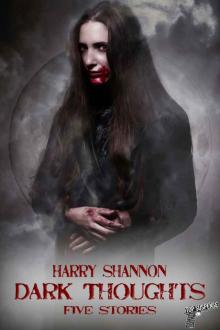 Dark Thoughts
Dark Thoughts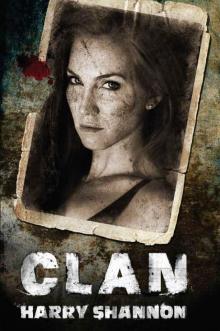 CLAN
CLAN One of the Wicked: A Mick Callahan Novel
One of the Wicked: A Mick Callahan Novel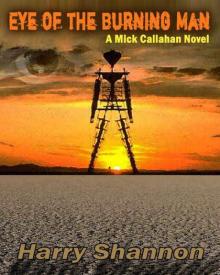 Eye of the Burning Man: A Mick Callahan Novel (The Mick Callahan Series)
Eye of the Burning Man: A Mick Callahan Novel (The Mick Callahan Series) Pain
Pain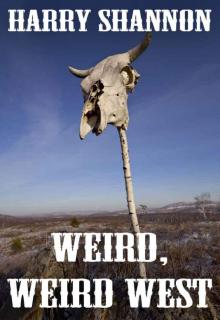 Weird, Weird West
Weird, Weird West Running Cold (The Mick Callahan Novels)
Running Cold (The Mick Callahan Novels)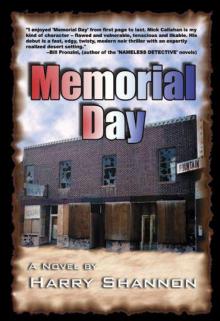 Memorial Day: A Mick Callahan Novel (The Mick Callahan Novels)
Memorial Day: A Mick Callahan Novel (The Mick Callahan Novels) Behold the Child
Behold the Child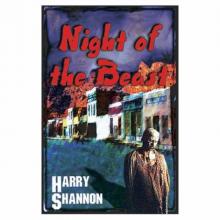 Night of the Beast
Night of the Beast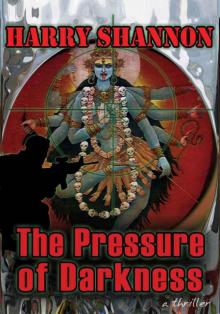 The Pressure of Darkness
The Pressure of Darkness Daemon: Night of the Daemon
Daemon: Night of the Daemon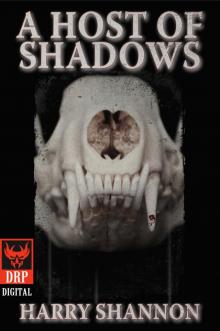 A Host of Shadows
A Host of Shadows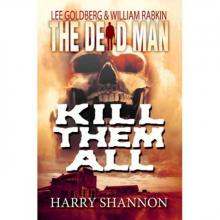 Kill Them All
Kill Them All